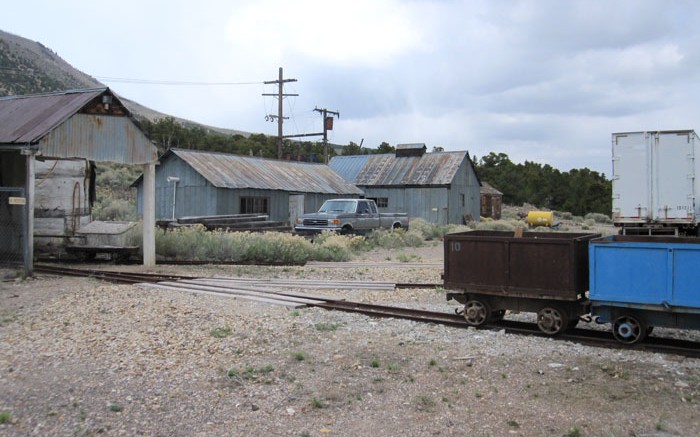Mag Silver (TSX: MAG; NYSE-AM: MAG) has signed an option agreement to acquire 100% of the Deer Trail project in Utah, a carbonate replacement deposit (CBD) that was intermittently mined for high-grade silver, gold, lead, zinc and copper sulphides until 1985, when the mine closed.
The 56-sq.-km project encompasses the historic Deer Trail mine and the adjoining Alunite Ridge area, 2-6 km to the west, which is cut by numerous gold-quartz and alunite veins that were prospected and mined from 1914 until 1945.
It is the first time these properties have been consolidated since the early 1980s, Mag Silver says, and it plans to start a fully permitted 6,500-metre surface drill program in early October. The company has based its initial targets on an integrated 3D Leapfrog Geo project that combines a large historic data set with Mag Silver’s CRD exploration model, in addition to new surface and underground mapping, core reclogging and geophysical reprocessing.
The company said in a news release the veining and surrounding alteration at the Alunite Ridge area “has long been suspected to be the surface expression of buried porphyry molybdenum-copper mineralization centre(s), which is supported by high-grade molybdenite-bearing quartz veins found recently by Mag in unsampled historic core.”
“Mag’s model suggests that these inferred intrusions are the source for continuous mineralization traceable to (and from) the Deer Trail mine CRD mineralization. Notably, this CRD-skarn-porphyry copper-molybdenum continuum is well expressed by the nearby giant Bingham Canyon porphyry copper district, which is of similar age and lies on the same regional fault system as Deer Trail.”
Peter Megaw, Mag Silver’s chief exploration officer, noted in the press release that Deer Trail has been on his “exploration radar since 1982 as it displays the most important characteristics of a large porphyry-related CRD system,” and that the company’s exploration team “is excited to see what unfolds over the next few months as we begin drilling for more extensive high-grade silver-gold-lead-zinc CRD and skarn mineralization below the historic mine.”
In order to earn its 100%, Mag must make a total of US$30 million in escalating annual expenditures (US$2.8 million has been spent as of the end of June) and US$2 million in royalty payments (US$150,000 has been paid as of the end of June) over the next ten years.
The company says drill and underground sampling results, “confirmed visually and by resampling,” support published production records from the Deer Trail mine of about 250,000 tons grading 3-42 grams gold per tonne; 350-465 grams silver per tonne; 3-5% lead; 1-2% zinc; and 0.6% copper. It also says that Deer Trail lies directly on the Tushar Fault splay of the regional Wasatch Fault system, which separates the Colorado Plateau and Great Basin geological provinces.
“This fault system hosts the giant Bingham Canyon porphyry copper-skarn CRD district 225 km to the north and several important CRDs including Tintic and Park City, Utah and Pioche, Nevada to the north and south respectively,” the company stated in its press release. In addition, the historic mine “cuts a number of ‘feeder’ faults that channelled mineralizing fluids from depth into the thin replaced limestone beds and ‘bleeder’ faults that channelled spent mineralizing fluids into the fringes of the system,” the Sept. 1o news release stated.
News of the deal sent Mag Silver’s Toronto-listed shares up 14¢ to close at $20.88 per share on Sept. 10.
At press time, its shares were trading at $21.03 within a 52-week trading range of $5.33 and $24.21 per share.
The company has 93.2 million commons shares outstanding for a $2-billion market capitalization.


Be the first to comment on "Mag Silver to acquire past-producing Deer Trail mine in Utah"